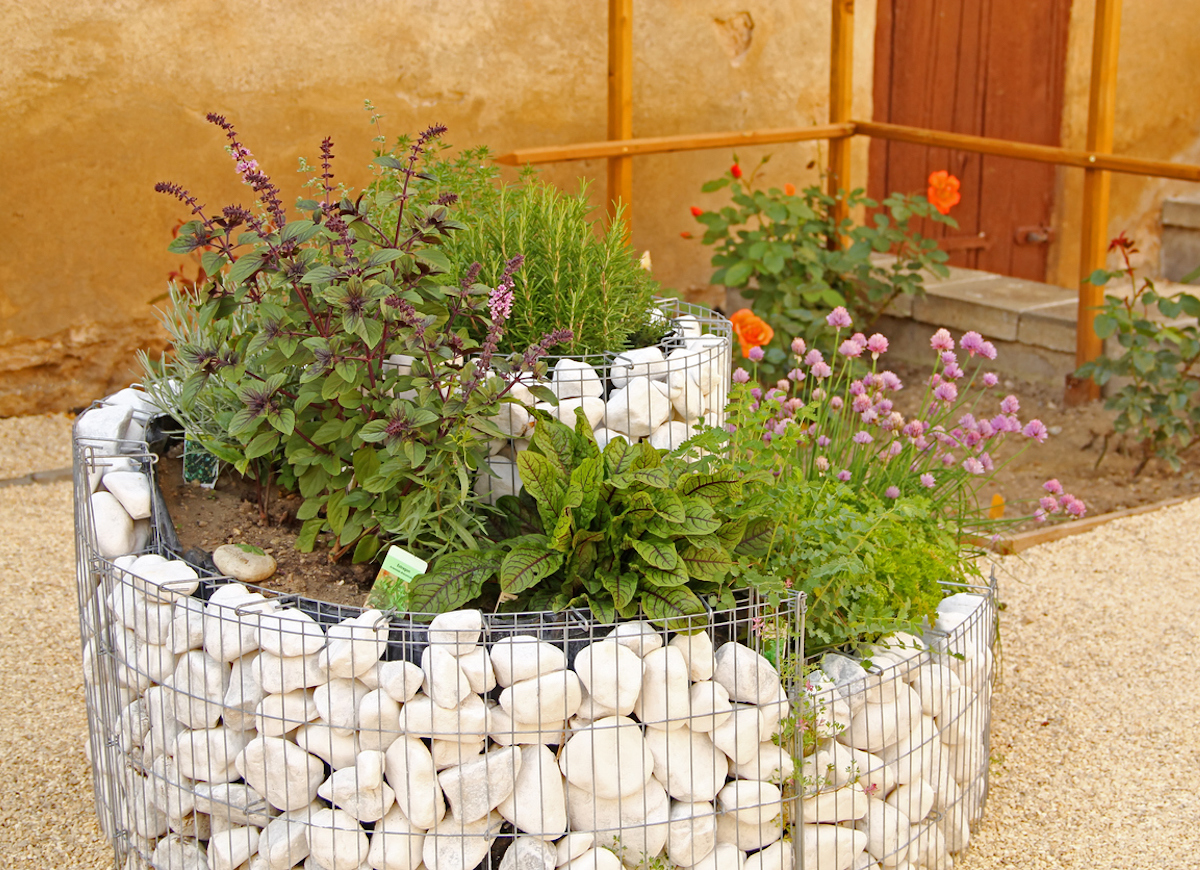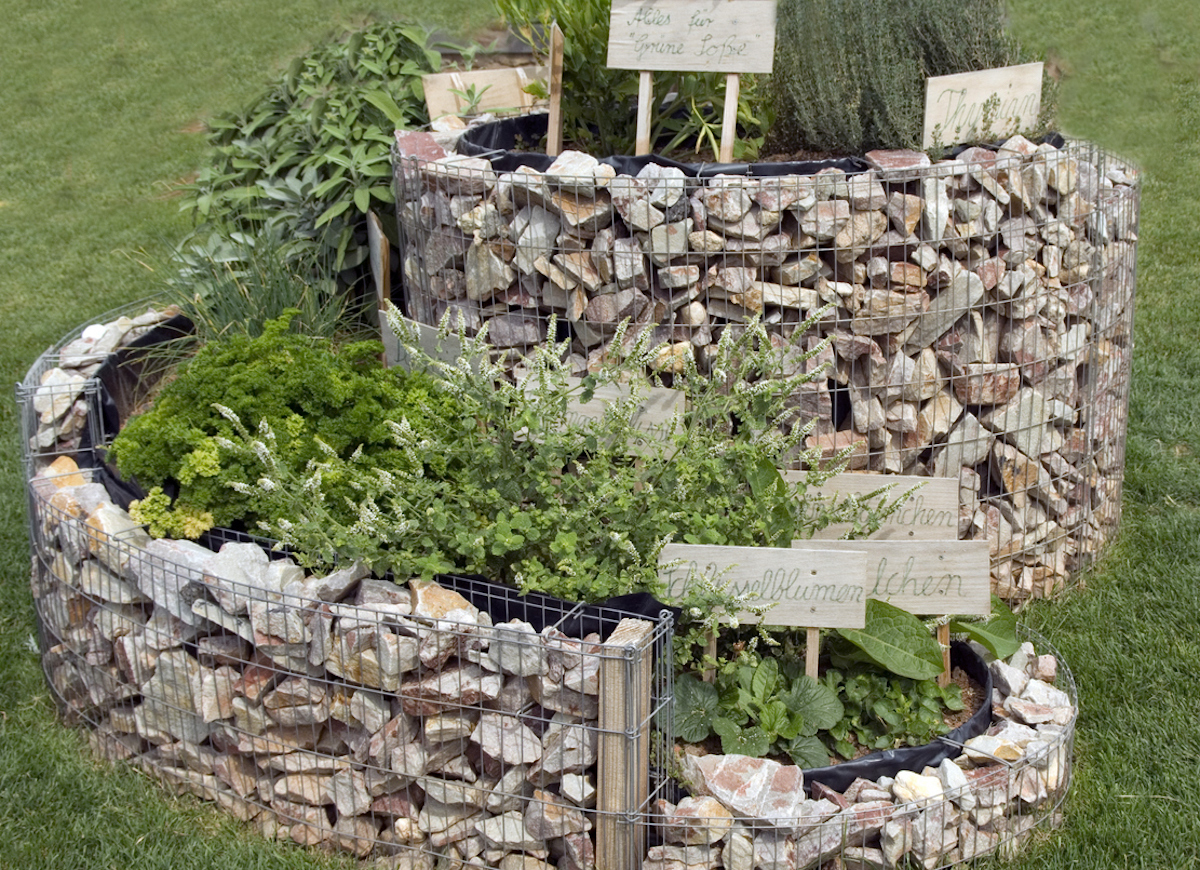We may earn revenue from the products available on this page and participate in affiliate programs. Learn More ›
Sustainable agriculture is all the rage, even at home. Looking for an easy way to participate? Try building an herb spiral garden.
An herb spiral garden is a highly productive design, combining companion planting, water conservation, and space efficiency principles to create a garden that while visually stunning, yields a bounty of culinary herbs even a professional chef would enjoy.
Between one and two meters in diameter, reaching a roughly equivalent height in the center, an herb spiral slopes downward as it unwinds to ground level. This architecture creates an ideal microenvironment for various herbs, any of which prefers slightly different growing conditions.
Related: You’re Probably Harvesting Your Herbs Wrong—Here’s How to Do it Correctly for Maximum Yield
Sun-loving plants that require better drainage, such as rosemary and oregano, thrive on top. Plants that need more moisture—mint or parsley, for instance—benefit from the natural flow of water created by the spiral’s slope.
It’s recommended for the base to face north. That way, one side of the herb spiral garden receives morning sun, while the other gets warm rays late in the afternoon. For different parts of the day, each side enjoys shade from the sun’s heat.

An herb spiral surpasses the traditional herb garden in the following ways:
1. Requires Less Space. At once circular and vertical, the spiral design enables gardeners to grow many more herbs than would be possible otherwise, making it a smart, practical option for those with limited outdoor space.
2. Microclimates. Simply by virtue of its shape and structure, the spiral naturally creates areas of sunny, dry soil and shady, moist soil. So even on a small footprint, a variety of plants, each with different requirements, can co-exist happily.
3. Accessibility. Because of the scale of the planting area, it’s easy to reach in and access any of the herbs belonging to the spiral, especially the ones at waist level. Performing basic gardening responsibilities—watering, weeding, harvesting—is a cinch.
4. Companion Planting. Herb spirals encourage gardeners to leverage the power of companion planting, which means creating mutually beneficial relationships between plants. For example, pest-repelling herbs like rosemary and sage can be sited near more vulnerable plants for protection.
Apart from these advantages, an herb spiral garden can also be very beautiful, leaving a real impact on your landscape—not to mention your dinner menu. Happy gardening, and bon appetite!

